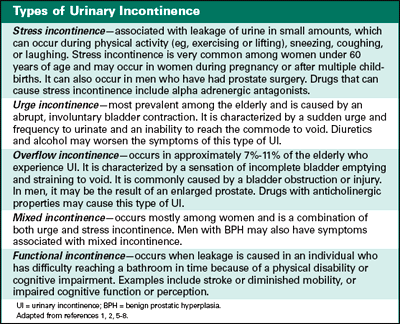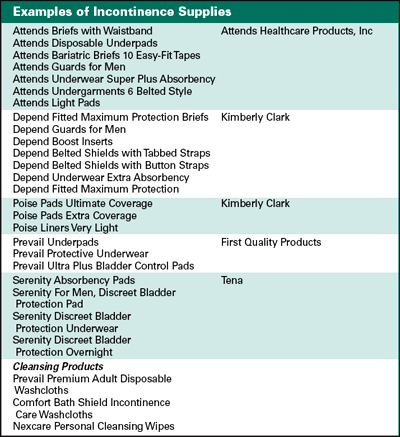Commentary
Article
Pharmacy Times
A Pharmacist's Guide to OTC Therapy: Januarly 2008
Author(s):
Low-dose Aspirin for CVD Prevention
Cardiovascular disease (CVD) continuesto be the leading cause of deathamong men and women in the UnitedStates. Once thought to affect primarilymen, the incidence of CVD continues torise among women. Statistics from theAmerican Heart Association (AHA) revealthat in 2007, an estimated 1.2 millionindividuals in the United States will havea first or recurrent coronary attack, andan estimated 452,000 of these individualswill die.1 CVD is the leading cause ofdeath among women, accounting for anestimated 38% of all deaths,2 and it isresponsible for more deaths amongwomen than the next 5 leading causes ofdeath combined, including all forms of cancer.3
Benefits of Aspirin Use
Various studies have demonstratedthat a daily aspirin regimen can reducethe risk of a nonfatal first heart attack byapproximately 32% and may reduce therisk of death by up to 23% if administeredwhen a heart attack is suspected and for 30 days thereafter.4,5
More than 50 million adults in theUnited States routinely take aspirin forlong-term prevention of CVD, with dailydoses ranging from 81 to 325 mg.6,7
Debate persists about the appropriatelong-term daily dosage of aspirin for cardiovascularprotection. In a report publishedin the May 9, 2007, issue of theJournal of the American Medical Association,researchers who reviewed 11clinical trials concluded that there was nocurrent clinical evidence to support thathigher doses of aspirin were more effectivethan lower doses of 75 to 81 mg dailyfor cardiovascular protection.6,7
The AHA recommends that the use ofaspirin be considered in patients whohave had the following conditions, ifaspirin is not contraindicated8:
- Myocardial infarction
- Unstable angina
- Ischemic stroke (caused by blood clot)
- Transient ischemic attacks
In February 2007, the AHA updated itsaspirin guidelines for preventing CVD inwomen.9,10 Although the 2004 guidelinesdid not recommend aspirin use inhealthy women or those with low cardiovascularrisks, the 2007 revisions recommendthat routine use of aspirin may beconsidered in women aged 65 andolder—regardless of cardiovascular riskstatus—if benefits outweigh the risks.9,10The AHA also recommends increasingthe upper dose of aspirin for women athigh risk for developing CVD from 162 to325 mg daily.9,10
A variety of low-dose aspirin productsare currently on the market, includingchewable tablets, enteric-coated tabletsand caplets, as well as formulations forwomen that also contain calcium (Table).
Table

Advice for Patients
Pharmacists are likely to encountermany patients seeking advice onaspirin regimens and preventive therapy,as well as proper selection of aspirinproducts. All patients should be advisedto consult with their primary healthcare provider before starting an aspirinregimen—especially if they have preexistingmedical conditions—to determineif any aspirin regimen is suitablefor them.
Before recommending aspirin therapy,it is imperative for pharmacists toassess the patient's allergy history andconcurrent medical and medication history to screen for possible contraindicationsand drug interactions. In addition,pharmacists should counsel patientsthoroughly about the proper use ofaspirin products, as well as inform themof potential adverse effects and theimportance of routine monitoring withtheir primary health care provider.
Patients should be reminded that ifthey are having a dental or surgical procedureto always alert the health careprovider that they are currently takingaspirin. Pharmacists also should usethis opportunity to remind patients tocontact their primary health careprovider if they have any questions orconcerns.
Finally, pharmacists can remindpatients of nonpharmacologic measuresthat also may minimize their cardiovascularrisks, such as maintaining ahealthy weight, eating a balanced dietlow in fat, adopting an exercise routineif appropriate, lowering cholesterol andblood pressure, if necessary, as well asquitting smoking. Pharmacists candirect patients to the various educationalresources available that provide informationabout cardiovascular health andpreventive care.
References
- Know the Stats, Get the Facts, 2007. American Heart Association Web site. www.americanheart.org/downloadable/heart/116861545709855-1041%20KnowTheFactsStats07_loRes.pdf.
- Facts about women and cardiovascular diseases. American Heart Association Web site. www.americanheart.org/presenter.jhtml?identifier=2876.
- Heart Disease and Stroke Statistics. American Heart Association Web site. www.americanheart.org/downloadable/heart/1166711577754HS_StatsInsideText.pdf.
- Role of Aspirin. Bayer HealthCare Web site. www.bayeraspirin.com/ha_role.htm.
- Primary Prevention of Cardiovascular Events. Bayer HealthCare Web site. www.bayeraspirin.com/emerging/primary.htm.
- Lie, D. Low Dose Aspirin Best for CVD Prevention. Medscape Web site. www.medscape.com/viewarticle/556309.
- Reinberg, S. Low Dose Aspirin Best for Preventing Heart Attack. MedicineNet Web site. www.medicinenet.com/script/main/art.asp?articlekey=80993&pf=3&page=1.
- Aspirin in Heart Attack and Stroke Prevention. American Heart Association Web site. www.americanheart.org/presenter.jhtml?identifier=4456.
- Heart Disease and Women. Bayer HealthCare Web site. www.bayeraspirin.com/hdwomen/undertreatment.htm.
- Updated Guidelines Advise Focusing on Women's Lifetime Heart Risk. American Heart Association Web site. www.americanheart.org/presenter.jhtml?identifier=3045524.
Urinary Incontinence Supplies
Urinary incontinence (UI) affects individualsof all ages. Although it becomes morecommon in older people, it is not a normalpart of the aging process. UI can be theresult of anatomic, physiologic, and pathologicfactors affecting the urinary tract, aswell as other external factors.1
For more information on urinary incontinence, visit the following Web sites:
- National Association for Continence at www.nafc.org
- National Kidney and Urologic Diseases Information Clearinghouse at kidney.niddk.nih.gov
- American Urological Association at www.incontinence.org
It is estimated that more than 17 millionindividuals in the United States havesome degree of UI, and 85% of thesecases are women (Table 1).2 In addition,another 34 million individuals are affectedby various degrees of overactive bladder.1 According to the National Associationfor Continence, an estimated 80%of UI cases can be cured or improved.3More than 50% of individuals affected bybladder disorders rarely—if ever—discussthese issues with their primaryhealth care provider because of embarrassmentor denial, and the issues areleft untreated.2
Some cases of UI may be transientand caused by the use of certain medicationsor by a urinary tract infectionand can be reversed.4 Many UI cases canbe chronic and long lasting, however,unless the individual seeks medical evaluationand treatment.4 Behavioral therapy,the use of pharmacologic agents, andsurgery are the 3 main types of treatmentfor UI.2,5
Table 1

The Role of the Pharmacist
Key Tips for Patients
- To avoid skin irritation, alwayscheck the skin every 2 hours
- Always change absorbent undergarmentsevery 2-4 hours, especiallyif urine loss is persistent
- Check with primary health careprovider to see if the use of skinprotectants (eg, those recommendedfor diaper rash like zincoxide) can be used to protectthe skin
- Always consult primary healthcare provider if skin irritation orsigns of skin infection occur
- Avoid foods, liquids, and othersubstances that may irritate thebladder
- Try to use incontinence productsthat may eliminate theembarrassment of unpleasantodors
Pharmacists are likely to receiveinquiries about supplies for the managementof UI; therefore, it is important forpharmacists to understand the conditionand be prepared to counsel and assistpatients and caregivers in the selectionof absorbent products. Pharmacistsshould always encourage patients toseek advice from their primary healthcare provider prior to using any of theseproducts. Pharmacists also can be key inidentifying the various medications thatmay contribute to or cause UI, includingangiotensin-converting enzyme inhibitors,alpha adrenergic blockers, antihistamines,calcium-channel blockers, diuretics,and antidepressants.1,8
A variety of absorbent products areavailable that include guards/shields,undergarments, and briefs to assist inthe absorption of urine (Table 2). Theseproducts can be either disposable orreusable and are available in many sizes;they may help in providing a moisturebarrier to protect clothes, bedding, andfurniture, as well as minimize skin contactwith urine.
Selection of these products is basedupon various factors, such as the amountof urine that is typically leaked, the severityand type of UI, the patient?s functionalstatus, the patient?s personal preference,ease of use, and cost, as well as theproduct?s ability to control odor.1,9
Products are designed to meet theindividual needs of men and women andfor overnight use. Pharmacists can helppatients understand the many optionsavailable for both the treatment andmanagement of UI that may enable themto improve their quality of life.
Table 2

References
- O'Neil, Christine. Adult Urinary Incontinence and Supplies. In: Berardi R, Kroon L, Newton G, et al, eds. Handbook of Nonprescription Drugs. 15th Edition. Washington, DC: American Pharmacists Association; 2006:1077-1091.
- Urinary Incontinence. MedicineNet.com Web site. www.medicinenet.com/urinary_incontinence/article.htm.
- Treatment Options for Incontinence. National Association for Continence Web site. www.nafc.org/about_incontinence/treatment.htm.
- Urinary Incontinence in Adults. National Institutes of Health Web site. consensus.nih.gov/1988/1988UrinaryIncontinence071html.htm.
- Attends Web site. www.attends.us.
- Depends Web site. www.depend.com/learn/female_incont.asp.
- Controlling Urinary Incontinence. FDA Web site. www.fda.gov/fdac/features/2005/505_incontinence.html.
- Drugs that may cause urinary incontinence. Merck Manual of Health and Aging. www.merck.com/pubs/manual_ha/tables/tb57_1.html.
- Urinary Incontinence Products. Medline Plus Web site. www.nlm.nih.gov/medlineplus/ency/article/003973.htm.







